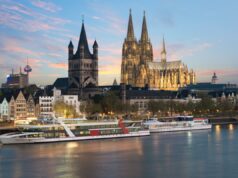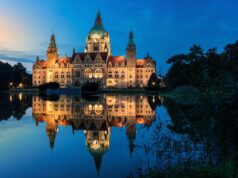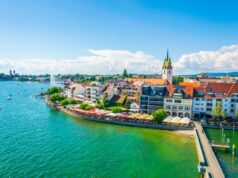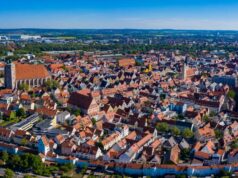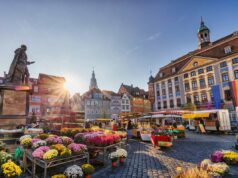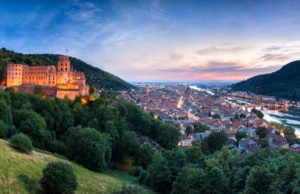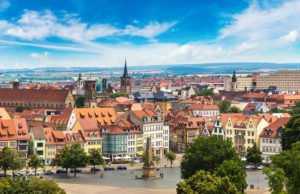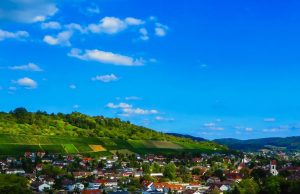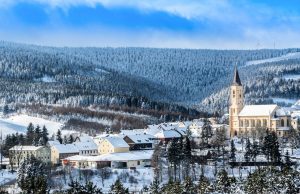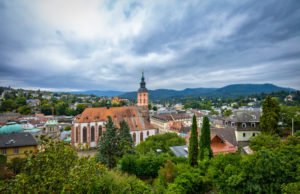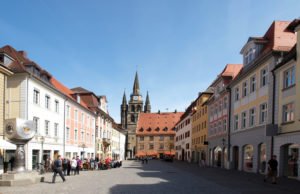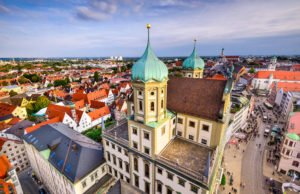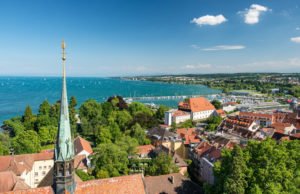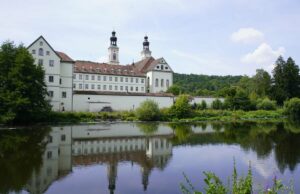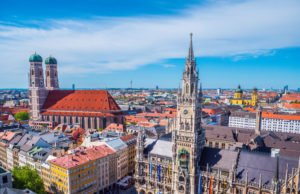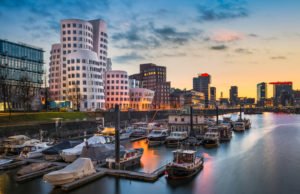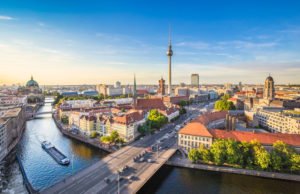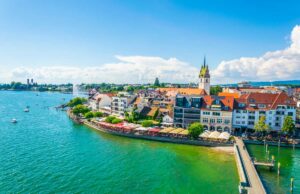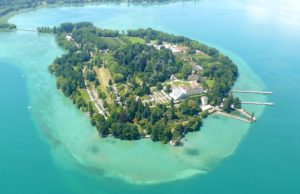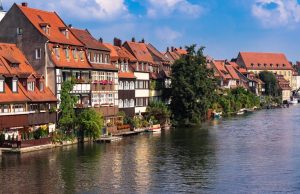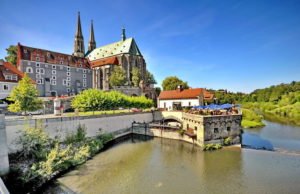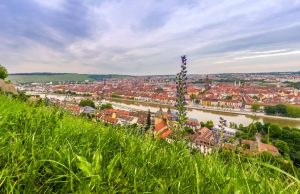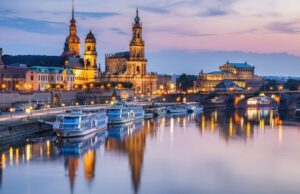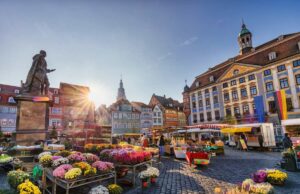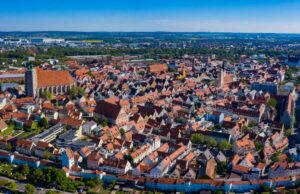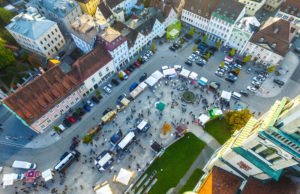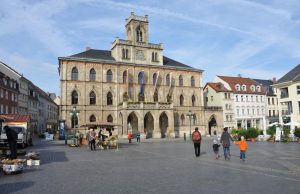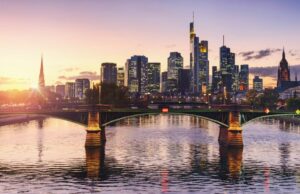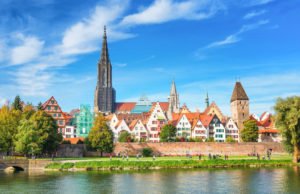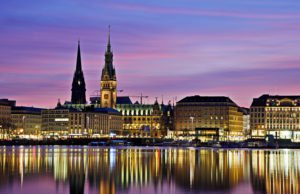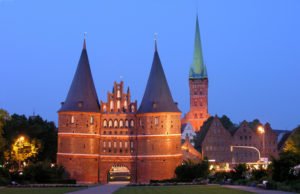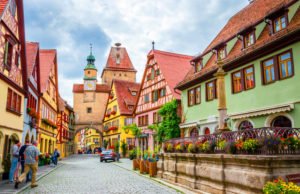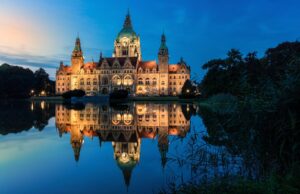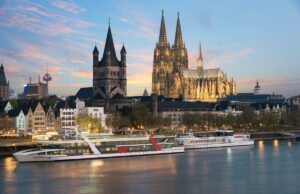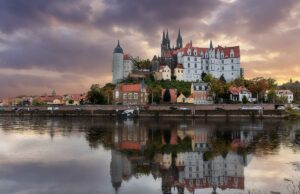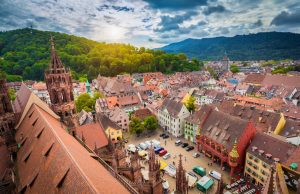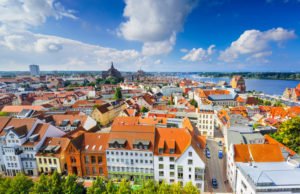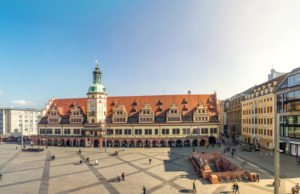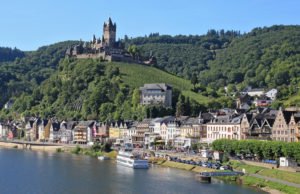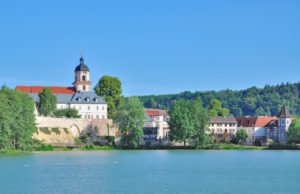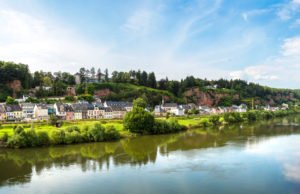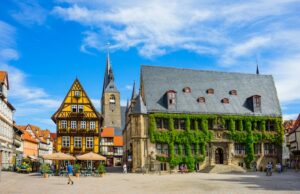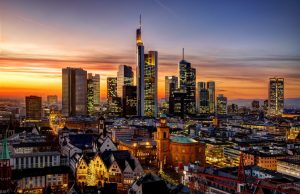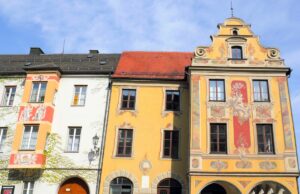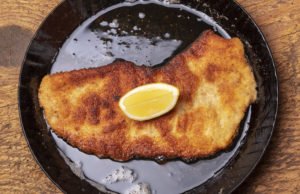Nestled at the foot of the Bavarian alps in the Allgäu region of Southern Germany, the medieval town of Füssen is a picture perfect alpine village with no shortage of attractions.
While many tourists make a day trip from Munich, there is plenty to see and do in and around Füssen, making a longer stay well worthwhile.
Many visitors pass through this charming town on the way to the famous Neuschwanstein Palace, but Füssen is also a fantastic destination in itself for those wishing to enjoy cycling, hiking or wellness retreats amongst beautiful mountain and lakeside scenery. In addition, there are plenty of options for accommodation from camping to upscale spa hotels as well as affordable and comfortable guest houses and inns. Likewise, there are plenty of opportunities to enjoy the traditional Bavarian cuisine and beer in many of the cosy restaurants or, when the weather is good, a beer garden or pavement cafe.

A Meeting Point for Legendary Routes
Although small enough to explore on foot and retaining the charm and feel of a traditional Alpine village, Füssen is easily accessible from Munich by train, bus or car and can be reached in under two hours, making it a popular day trip from the Bavarian capital.
The train is a comfortable, easy, and affordable way to reach Füssen from Munich with special Bayern tickets available which are particularly good value for groups or families. Cyclists can bring bikes onboard the train for a small charge with a bicycle ticket.
In addition to excellent modern transport links, Füssen is the meeting point for the Romantic Road, the Alpine Road, and the Via Claudia Augusta.
The Romantic Road is Germany’s most popular tourist route, covering nearly 400 kilometres from Würzburg to Füssen and taking in charming medieval towns, picturesque countryside, castles, and palaces culminating in the stunning Neuschwanstein Castle located just outside of Füssen.
Meanwhile, the German Alpine route is Germany’s oldest tourist route and traverses 450 kilometres of stunning lakes and mountain scenery from Lake Constance in the west to Lake Königssee in the east.
Intersecting with these two famous and picturesque German tourist routes is the historic Roman road, the Via Claudia Augusta. This is the old Roman route through the alps which connects Donauwörth on the Danube to Venice and the Adriatic Sea. Today the 700-kilometre route is extremely popular with both cyclists and hikers owing to its excellent amenities and stunning scenery. There is even a shuttle bus available to take cyclists and their bikes over the most demanding parts of the route, the Fern and Reschen passes. The Via Claudia Augusta, or parts of it, can be undertaken individually but organised tours and bike rental are also readily available.
Historic Sites and Rich Culture in Stunning Natural Scenery
Not only is Füssen blessed with stunning natural scenery, but the town is also rich in history and charm. Situated on the banks of the River Lech and close to several lakes, including the Forggensee, Füssen has the distinction of being the highest town in the German state of Bavaria.

Boat trips on Lake Forggen allow stunning views of the mountains and lake with excellent onboard facilities and can be combined with cycling tours around the lake as bicycles can be brought on board free of charge. Cruises on the lake operate from June to September.
A short walk from the town centre, visitors can enjoy the scenic gorge and falls on the river Lech where the pristine turquoise alpine water passes through this dramatic landscape.
In addition to the stunning natural scenery, Füssen, dating back 700 years, is a town rich in history. Towering above the old town is the Hohes Schloss or High Castle. The castle is one of the largest and best-preserved Gothic castles in all of Bavaria and nowadays is home to a branch of the Bavarian State Art Gallery, showcasing Gothic and Renaissance art.

Beautifully situated on the bank of the River Lech is the Benedictine Monastery of Saint Mang. Dating from the 8th Century this magnificent baroque monastery houses the Museum of the City of Füssen. In addition to displaying several of the grand halls and the Monastery library, the museum features a large and beautiful collection of antique lutes and violins as well as a workshop where visitors can see the manufacturing process. Once the centre for European lute and violin makers, the first lutes in all of Europe were made in Füssen in 1562 and this tradition of music and instrument making is alive in the town today. As well as the displays of instruments, music lovers can enjoy the many concerts and festivals which take place throughout the year.
A Visit for Health and Wellness
For those needing to relax and recharge, Füssen is well known as a centre for wellness and spas and is a recognised Kneipp spa town. Many hotels and wellness centres offer packages and also accept day visitors to their spas and saunas. The combinations of natural remedies, hydrotherapy, spas and saunas along with opportunities for gentle exercise and tranquil scenery make Füssen an ideal place to unwind, recover or detox. A wide range of spa packages can be booked through the Füssen city tourist bureau or website with options to suit all needs and budgets.
Experience Nature on Foot or on Bike
With more than 200 kilometres of hiking trails and 1,500 kilometres of cycling trails in the vicinity, Füssen is a paradise for walkers and cyclists. With very little road traffic and an excellent network of well maintained off-road paths and trails, hiking and cycling in the lakes and mountains around Füssen are both safe and pleasurable. In addition, infrastructure and amenities are excellent with plenty of shops renting bicycles and many hotels and guest houses specially catering for cyclists and walkers. There are even options for travelling on public transport with bicycles to make trips farther afield much easier.
For hikers wishing to combine scenery and history, there are many guided tours catering to varying levels of fitness which are offered for very reasonable prices by the tourist information centre.
Likewise, there are many cycling tours available catering to all abilities and there is even the opportunity to rent electric bikes. For independent cyclists, excellent maps and GPS information are available and there is even a network of B&Bs or bed and bicycles. Bed and bicycle hosts provide accommodation plus cycling advice, safe bicycle storage and even help with repairs.
Fairy Tale Castles
Of course, no trip to Füssen would be complete without visiting at least one of the famous castles located nearby.
One of the most popular castles in the world with nearly 1.5 million visitors each year, Neuschwanstein is perhaps the most iconic of Germany’s many beautiful castles. Perched on a rocky outcrop in a beautiful setting overlooking a series of lakes it so perfectly typifies the ideal of a fairy tale castle that Walt Disney based his magic kingdom castle on Neuschwanstein. Built between 1869 and 1886, Neuschwanstein was intended to be a dreamy private retreat for the eccentric King Ludwig the second of Bavaria, however, the king died in mysterious circumstances shortly before it was completed. The castle can be reached easily from Füssen by bus, car, foot or bike, however, tickets must be purchased from the ticket centre in the village of Hohenschwangau located below the castle. The castle cannot be directly approached by car or bus and, as it is about a half hour walk from the ticket centre up the hill to the castle, entrance visitors may wish to use the shuttle bus or horse drawn carriages which are available for a charge to reach the entrance to the castle.
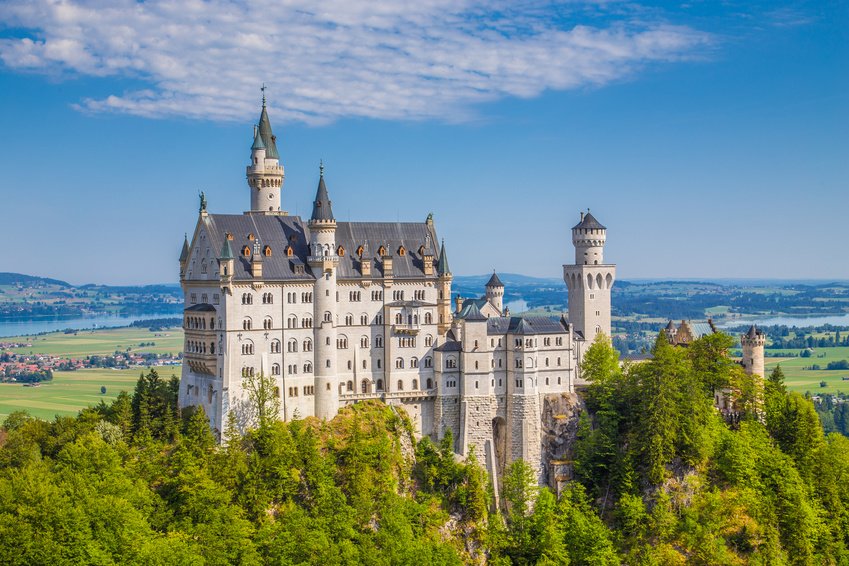
Neuschwanstein is not the only one of King Ludwig’s palaces which merits a visit. The stunning Linderhof Palace was the only residence which King Ludwig completed and actually lived in. Built in the French Rococo style, the palace, is an opulent residence which King Ludwig II modeled on Versailles. No less impressive are the beautiful formal gardens and palace grounds which contain strange and fanciful buildings including the Venus Grotto, a man-made grotto based on the famous Blue Grotto of Capri and intended to depict a scene from Wagner’s Tannhäuser opera. Linderhof can be reached from Füssen in under an hour by car or by bus in a little over an hour and a half.
Hohenschwangau Castle is often visited in combination with Neuschwanstein Castle as it is located just a short walk from Neuschwanstein. Though the site has been occupied by various castles since medieval times, the current castle dates from 1839 and was the childhood home and summer residence of King Ludwig II. Tickets combining visits to Neuschwanstein and Hohenschwangau as well as the museum of Bavarian Kings are available as are guided tours of all the castles.



